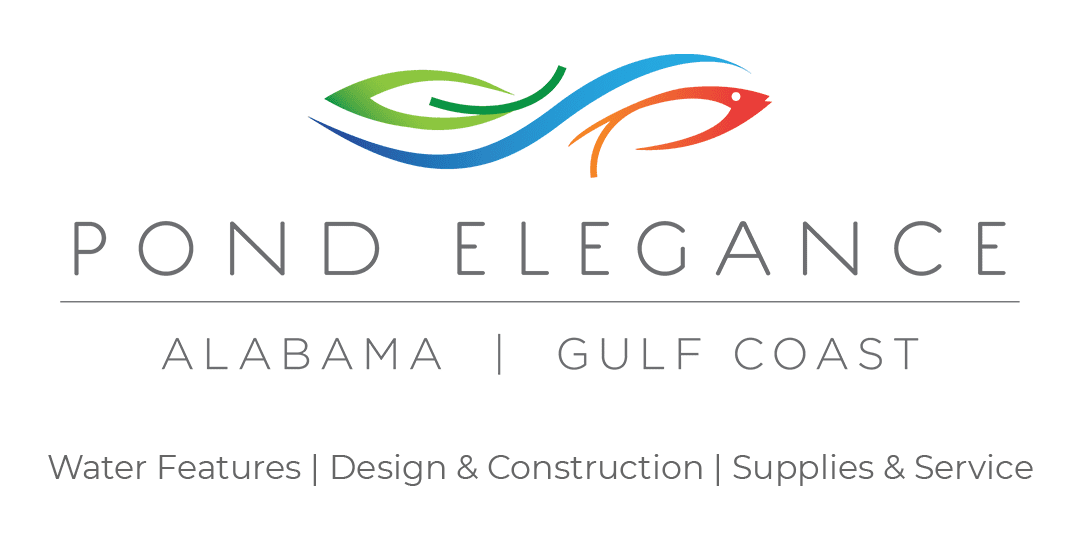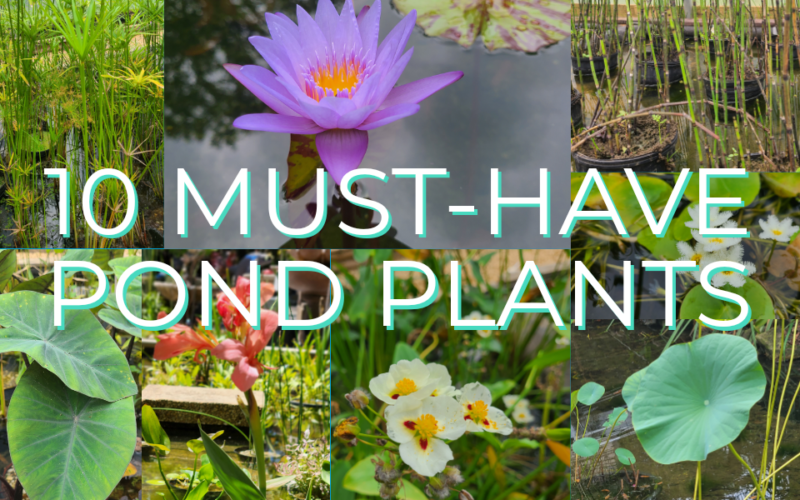
Coming in at numbers 7, 8, and 9 on our February blog post, “28 Reasons We Love Our Ponds,” were plants! Plants are the first step to bringing life to our backyard ponds and water features. We need our plants as much as we love our plants.
Plants define the perimeters around our waters. They give our fish hiding spaces and shade. Plants carry the load of balancing the nutrient levels of ponds as well. Honestly, a pond can only be complete with the proper plant life.
In the home stretch of Spring, be sure to stock your ponds with the right plants for your personal ecosystem. Pond Elegance has an unmatched selection of aquatic plants in Mobile, Alabama, and the surrounding Gulf Coast.
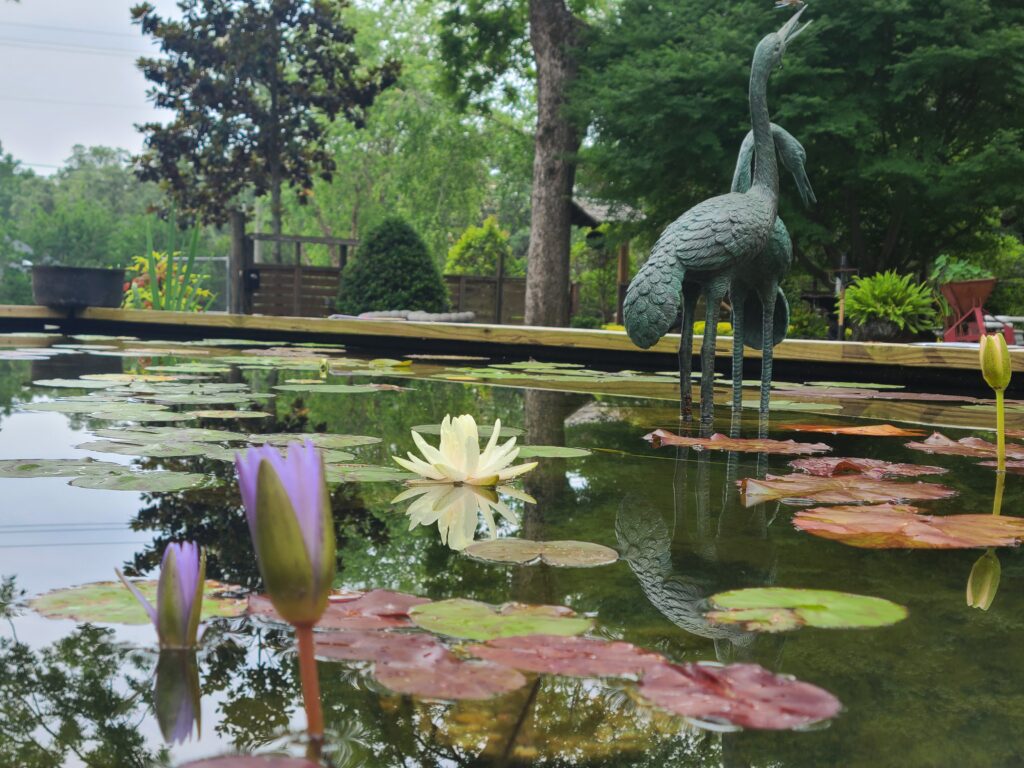
Remember, there are three categories of aquatic plants; emergent, submerged, and floating. Each type gives your fish, design, and water a different benefit. Choosing the right plant for the effect you want is simple with aquatic plant types in mind.
Emergent plants are those that have roots or tubers that grow under the water while their leaves and stems extend above the water’s surface. These plants move with the wind, and the resulting water movement contributes to healthy oxygen levels. These plants are also gorgeous as most of them flower or have distinct, attractive foliage.
Submergent plants, or hydrophytes, grow completely under the water and remain under the water’s surface. Submerged plants also help oxygenate the water and provide habitats for koi and goldfish.
Floating plants, simply put, float on the water’s surface with their roots hanging in the water. Floating plants are especially great at providing cover for fish. Floating plants are also good at absorbing excess nutrients.
All three types of aquatic plants play an essential role in aquatic ecosystems, contributing to water quality, habitat creation, and overall ecological balance.
Here are the ten must-have plants for your Gulf Coast pond.
- Hardy Lily
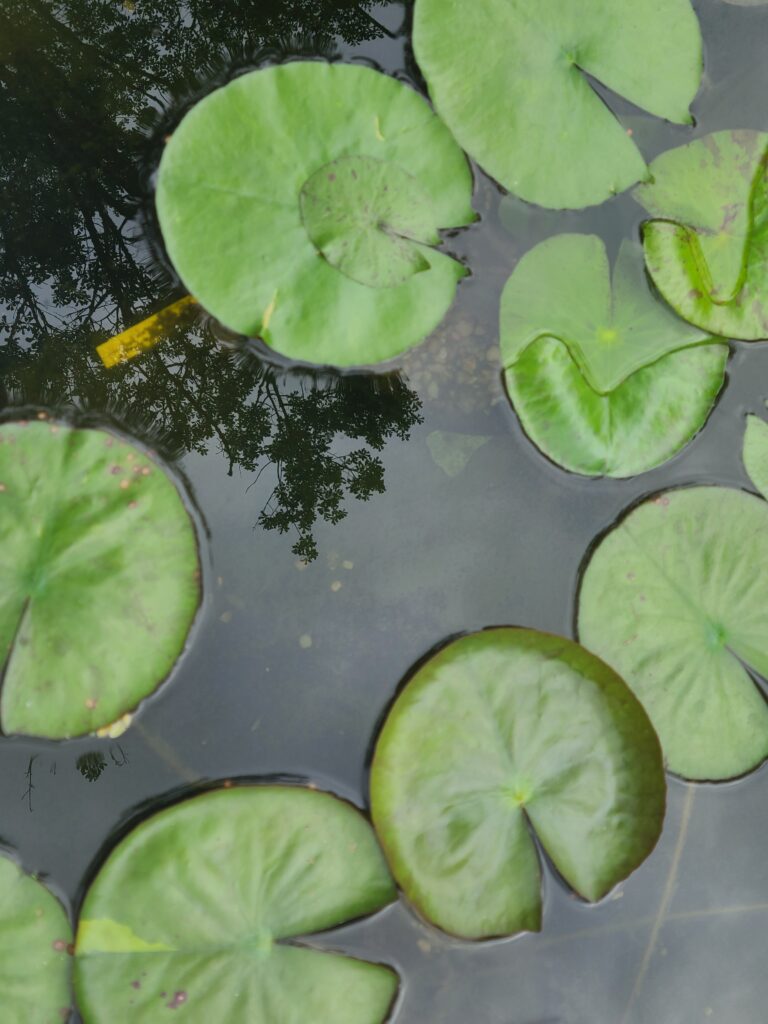
The Water Lily is synonymous with the backyard pond. They are emergent plants with many leaves and flowers.
The “Hardy,†part of the name is because they are perennials through USDA zones 3 to 10. They are able to withstand some freezing temperatures. Their large, floating, green leaves fan out around the pond. During the day, hand-sized colorful flowers open like roses set on top of the water’s surface. At night, they close and stand in the water like a budding Tulip.
There are varieties of Hardy Lilies that break this pattern, though. Hardy Lilies have flowers of white, red, yellow, and all the shades between them.
Hardy Water Lilies need at least six hours of direct sunlight each day to thrive. These Lilies grow from rhizomes set in heavy clay and loam mixed soil. All water lilies are heavy feeders and benefit from regular fertilization. Use specially formulated aquatic plant fertilizer tablets or spikes and push them into the soil around the water lily. During the Winter, they go dormant. They should be stored in your pond at the deepest end.
- Tropical Lily
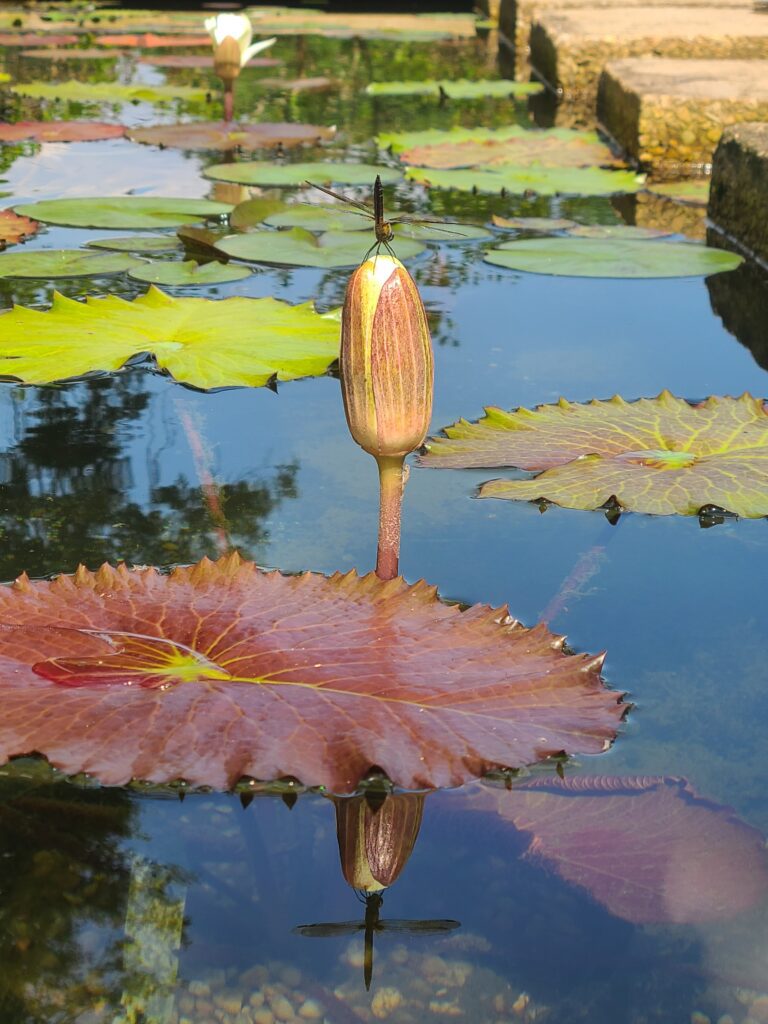
Slightly different than Hardy, Tropical Lilies need warm temperatures year-round. They cannot handle even a light freeze. They also grow from tubers, not rhizomes. Before winter, the tubers should be removed from the pond and stored in a cool moist medium until the pond waters return to 70 degrees or above.
If you’re unable to store the tubers, they can be treated as an annual and replaced yearly.
The leaves and flowers of the Tropical Lily are generally larger in size than the Hardy varieties. They also come in more vibrant, jewel-toned colors. Their pads are green but may have freckles of maroon. Additionally, their pads have textured or scalloped edges instead of the smooth round pads of the Hardy varieties.
- Arrowheads
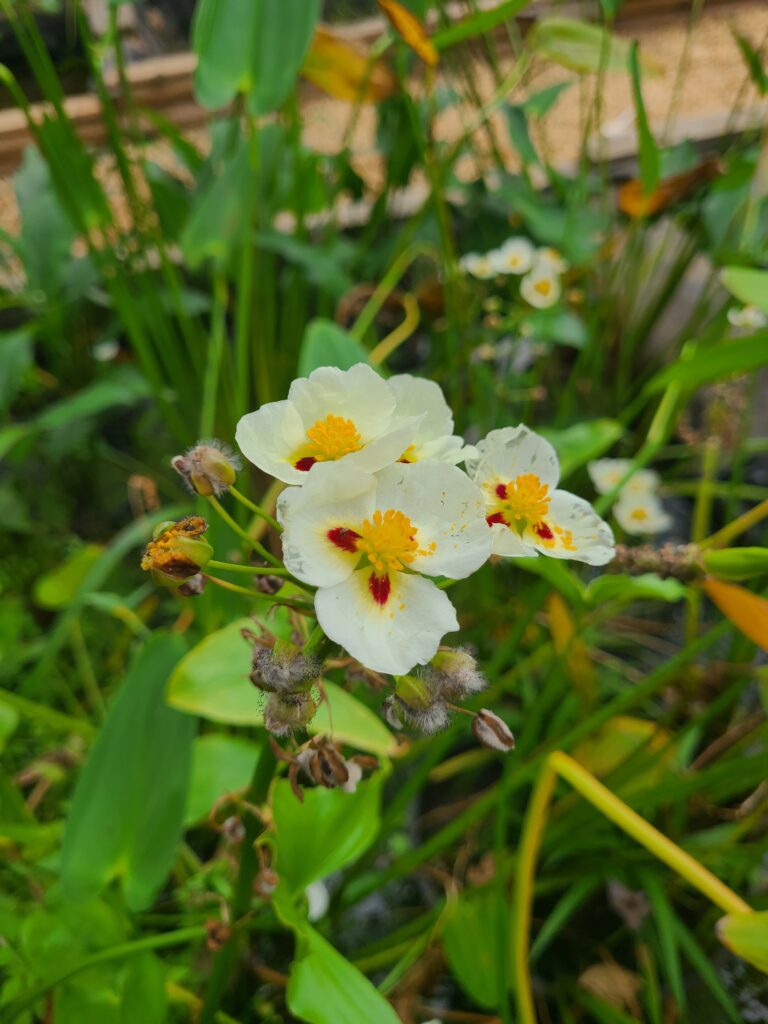
Some call these emerging plants Arrowheads, because of the lance shape of their leaves. Others call them Duck Potatoes because of the cluster of edible corms they grow from beneath the water. Their leaves are centered with a midrib and have deep veins that branch outwards, giving them a distinctive appearance. Their leaves can also vary in color from green to maroon.
Arrowheads produce small, white flowers that are held on upright stalks above the water’s surface. The flowers have three rounded petals and are often surrounded by small leaf-like parts called sepals. They bloom during the summer attracting pollinators like bees and butterflies.
They prefer full sun but can tolerate partial shade. In the right conditions, they can spread rapidly and become very dense. Depending on the size of your pond, this can be a great addition to help with shading your water. The plant also helps improve water quality by filtering excess nutrients and sediment.
- Moneywort
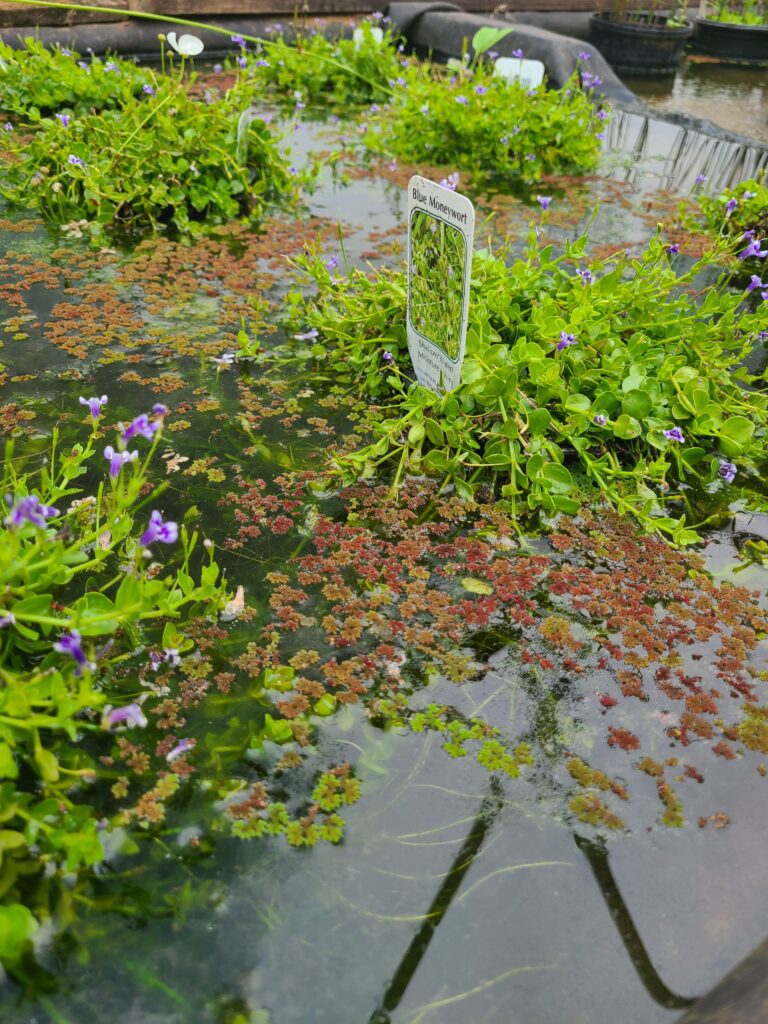
The Moneywort plant, also known as Creeping Jenny, is a low-growing and floating perennial plant that grows on the banks and margin of water features. It is native to Europe but has been widely cultivated in the United States and other parts of the world. This low-maintenance trailing plant forms a dense mat as it spreads across rocks, planters, and even the ground. Moneywort flowers are bright yellow and cup-shaped.
There is also Blue Moneywort with the only difference being it has blue flowers instead of yellow.
They require regular feeding. They grow best in full shade but also do well when floating in the sunny parts of a pond.
- Taro
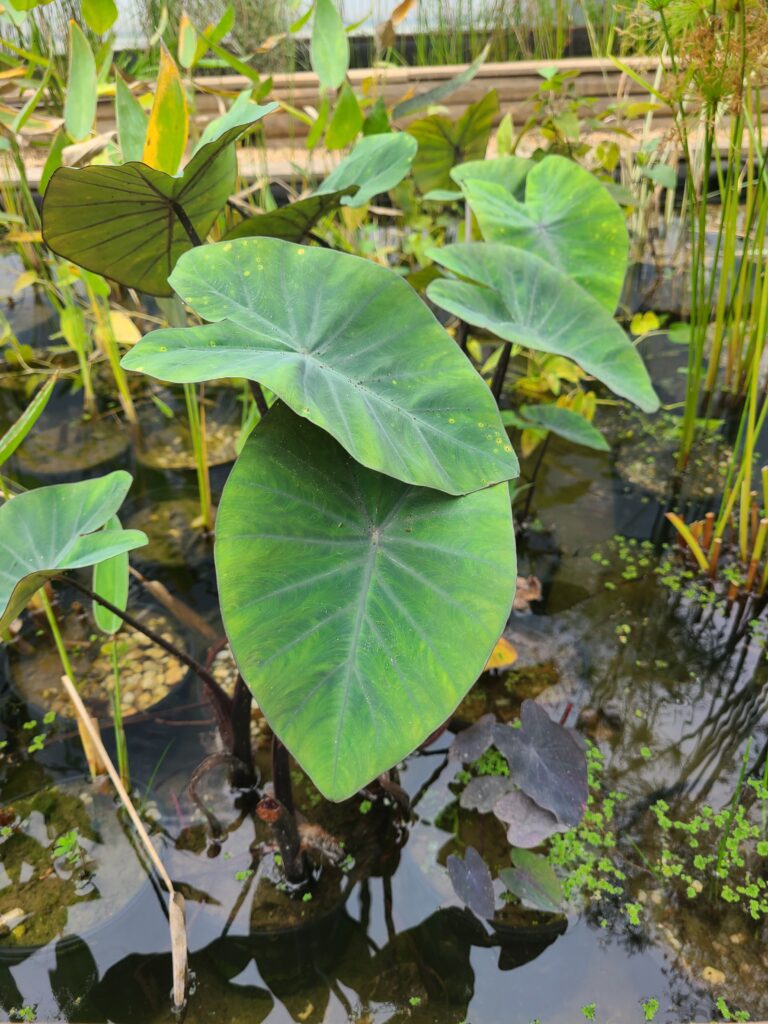
Taro is better known as Elephant Ear. Taro is a tropical plant that adds a lush, full look to your pond. It has large, heart-shaped leaves that come in a variety of colors, from green to deep purple. There are even some black varieties. They also come in a range of sizes. Most Taro grows up to four feet tall, so it is best suited for larger ponds.
It is the perfect plant to grow as a shade cover. It can survive in and out of the pond so long as the soil it is in remains moist. This plant requires at least six hours of full sun.
- Horsetail Reed
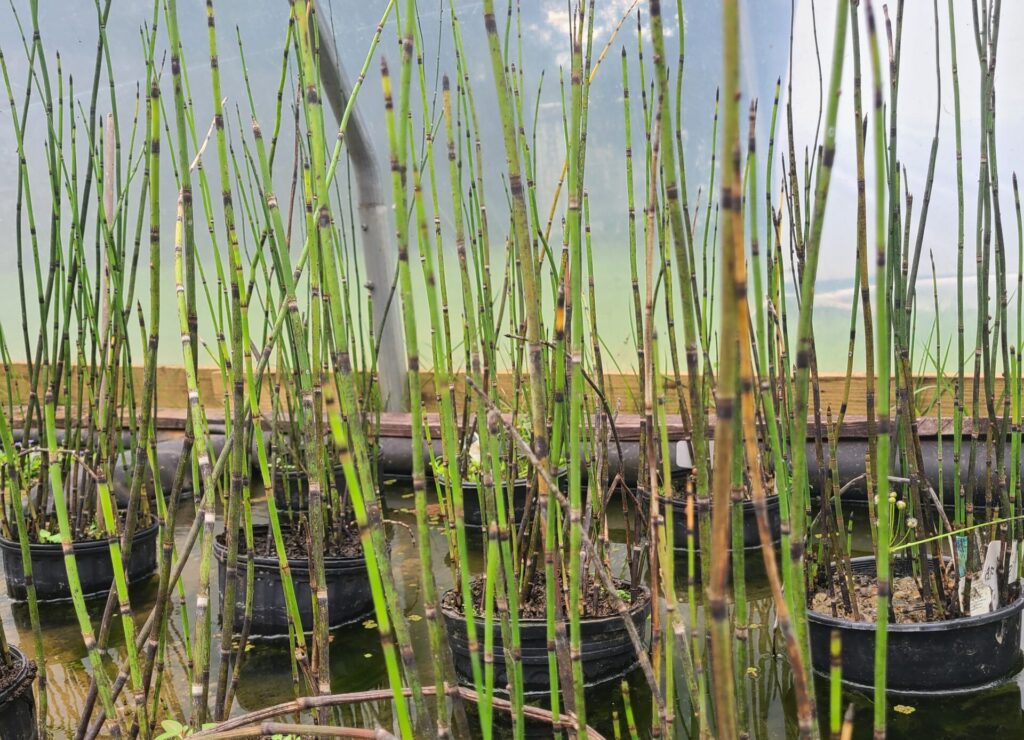
The Horsetail reed has a very uniform vertical growth habit that can add a modern touch to your pond. This plant has long, slender stems that resemble bamboo. This is an evergreen perennial that does well in full or partial sun. Horsetail reed is a hardy plant that can tolerate light freezes. It can survive in both shallow and deep water as it can grow two to six feet tall.
It makes a great habitat for fish and other aquatic animals. Unfortunately, it is an aggressive grower. Keep your plant in a container that suits the size of your pond so that it doesn’t take over your entire water garden.
- Umbrella Palm
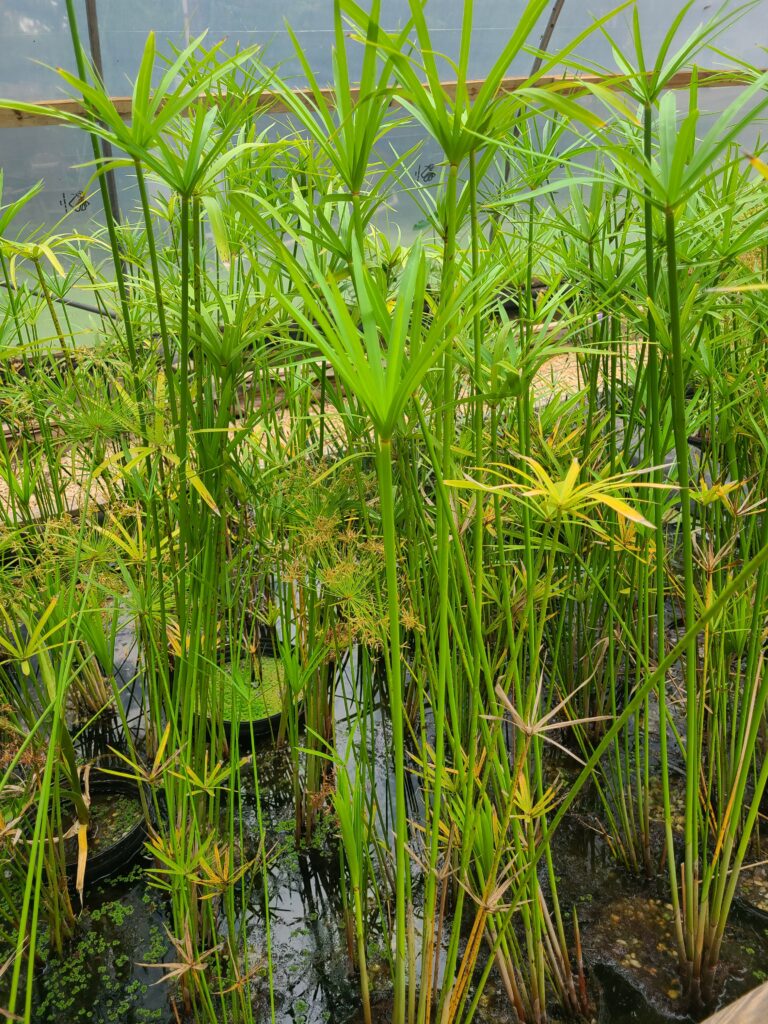
The Umbrella Palm is a tropical plant that provides an Ancient Eygpt vibe to your backyard oasis. This plant has long, thin stems with large, umbrella-shaped leaves that provide the shade your water needs. Umbrella Palms can grow up to six feet tall and can spread rapidly.
Keep your Umbrella Palms in a large container. It requires warm water temperatures and a lot of sunlight, making it a perfect choice for the Gulf Coast. The plant will die back in the Winter but reemerges in the Spring as long as temperatures don’t get below 15 degrees Fahrenheit. If winter temperatures do get 15 degrees Fahrenheit, the plant will likely completely die.
- Water Snowflake
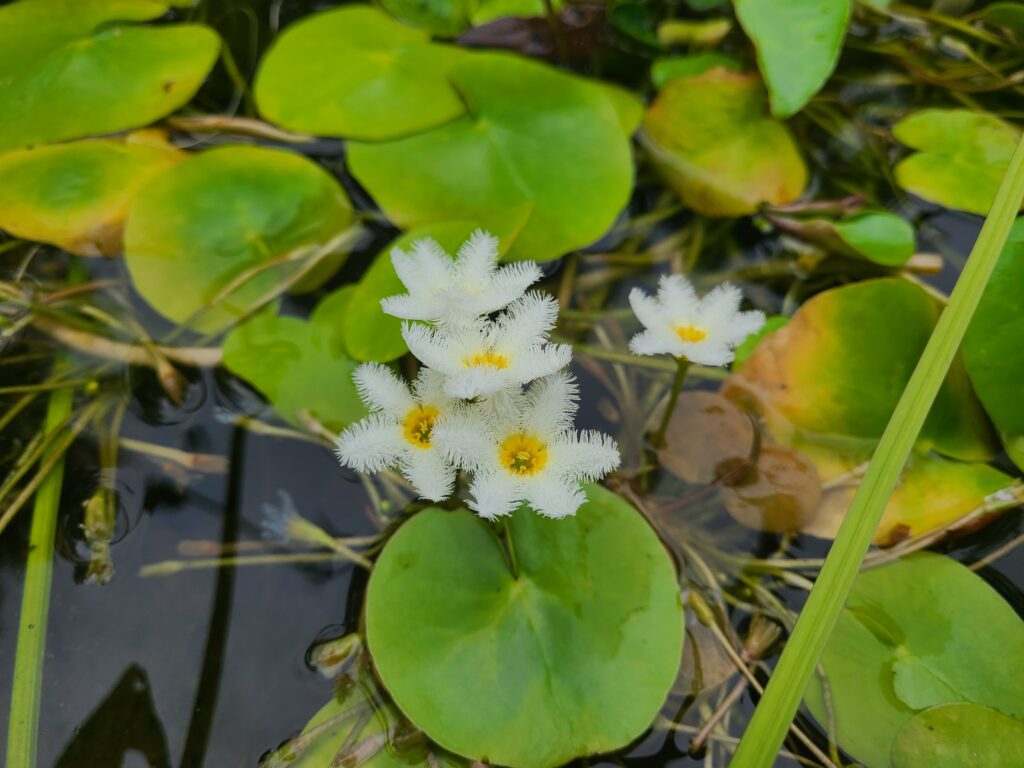
Water Snowflake is a visually stunning plant that adds an element of elegance. It has small, lily pad-like leaves that float in the water. In the Spring, delicate star-shaped white flowers that resemble snowflakes bloom. Their flowers are what gives them their name.
Water Snowflake is a low-maintenance plant, making it an ideal choice for both beginner and experienced pond owners. It is a versatile plant that can thrive in full sun or partial shade.
Like other aquatic plants, Water Snowflake plays a crucial role in maintaining the health of your pond ecosystem. It acts as a natural filter for your pond. Its extensive root system helps to absorb excess nutrients and organic matter. This can protect your pond from water clarity issues and algae blooms.
- Wate Canna
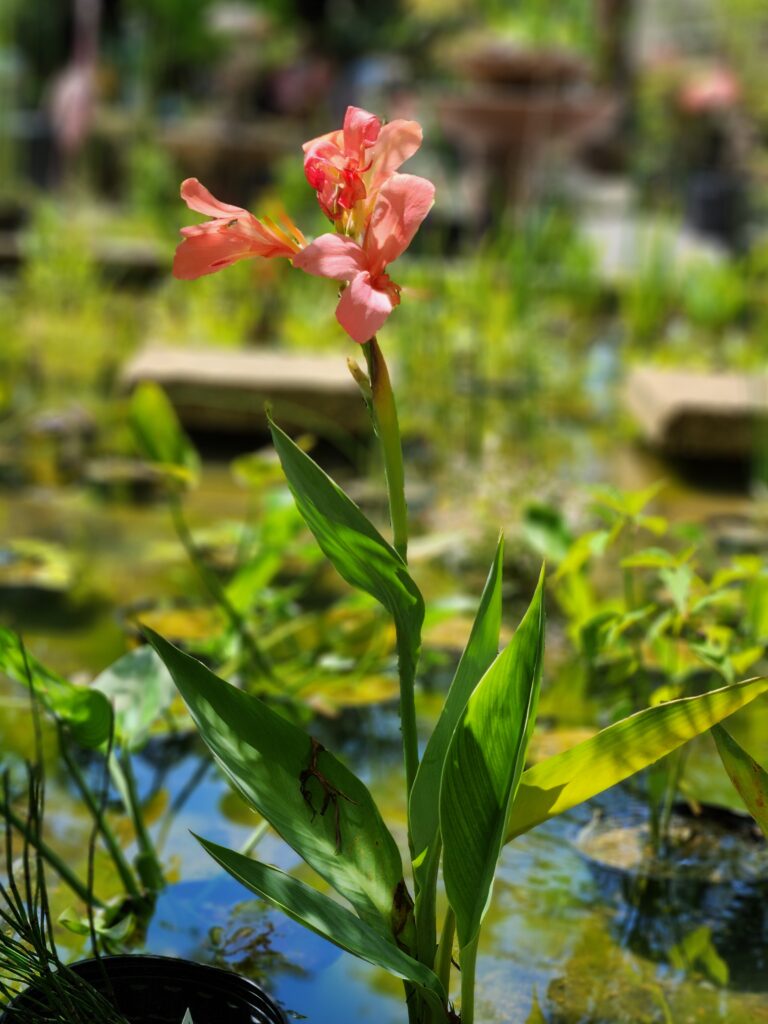
Water Canna is very versatile. It can be grown in the pond, in the garden, and indoors! In the pond, it is renowned for its stunning foliage and vibrant flowers. The broad, paddle-shaped leaves are often variegated with shades of green, bronze, or purple. This plant has a captivating display even when it is not in bloom. When they are in bloom, they produce showy flowers in a wide range of colors.
Their vibrant flowers are a magnet for pollinators such as bees, butterflies, and hummingbirds. These pollinators can contribute to the overall biodiversity of your pond’s ecosystem.
Water Canna is adaptable to different planting methods, allowing you to choose the most suitable option for your pond. It can be planted directly in the soil at the edges of the pond or in containers that are partially submerged in water as deep as 12 inches.
- Lotus
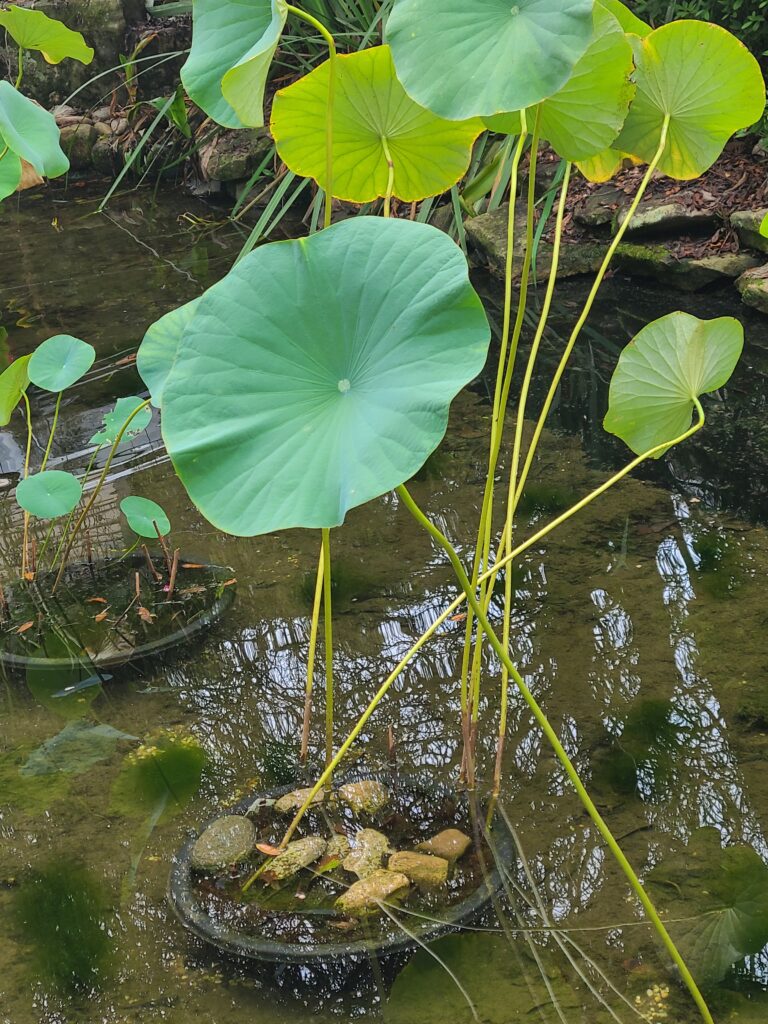
Number ten is the most enchanting of all of the pond plants. The majestic Lotus! They have been regarded as symbols of purity, enlightenment, and spiritual growth. Their large, extraordinary appearance creates a serene and tranquil atmosphere. Lotus flowers truly foster a sense of peace and connection with your pond.
They have large, circular leaves that rise up to five feet above the water’s surface. Their flowers can bloom nearly 12 inches wide in colors that range from white to red to pinks, yellows, and blues.
This hefty plant needs at least six hours of sunlight each day. They are also heavy feeders that require regular, frequent fertilizing. On the Gulf Coast, Lotus can overwinter in the deepest part of your pond.
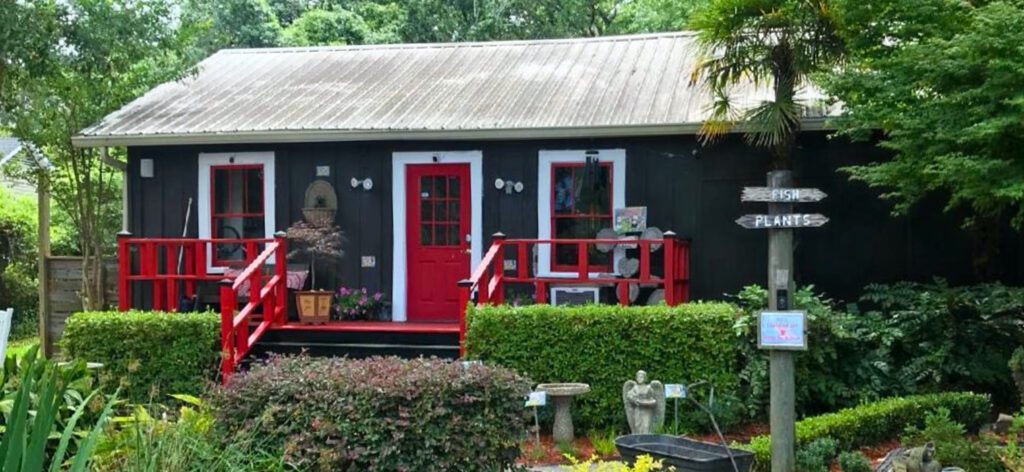
Whether you are an experienced pond owner or new to water gardening you can have healthy, happy plants so long as you meet their needs. Most aquatic plants prefer full sun. They also all need regular fertilizing. Fertilizing is made easy with specially formulated pond tabs that can be pushed into your plant’s soil.
Healthy, happy plants are a big part of having a clear and clean pond. The best pond will have a balanced ecosystem. Your fish depend on a balanced ecosystem. If your pond is experiencing excessive algae bloom, or green, dirty water, plants can help, but so can a professional. The professionals at Pond Elegance specialize in building and maintaining residential and commercial ponds. Contact us today to have your space assessed. Visit the store in Mobile to shop for plants, fish, and all other pond supplies.
